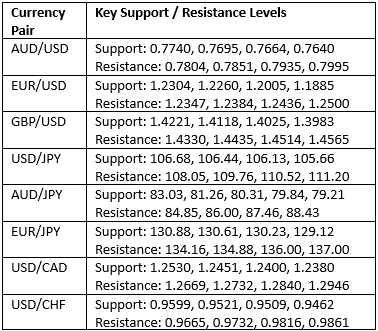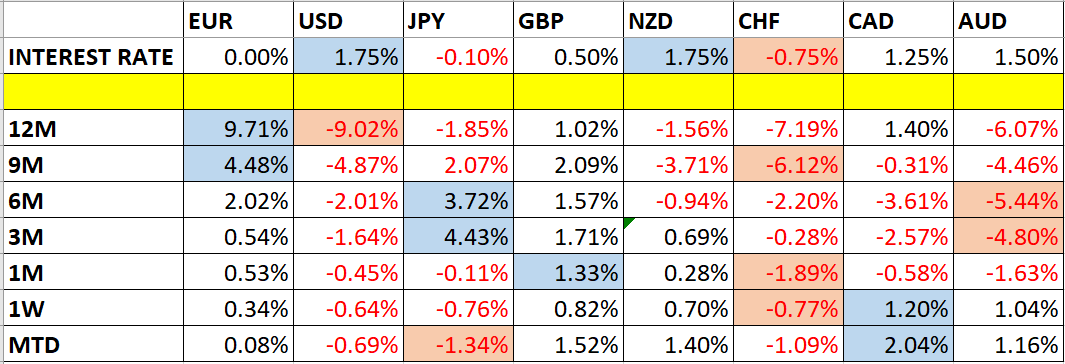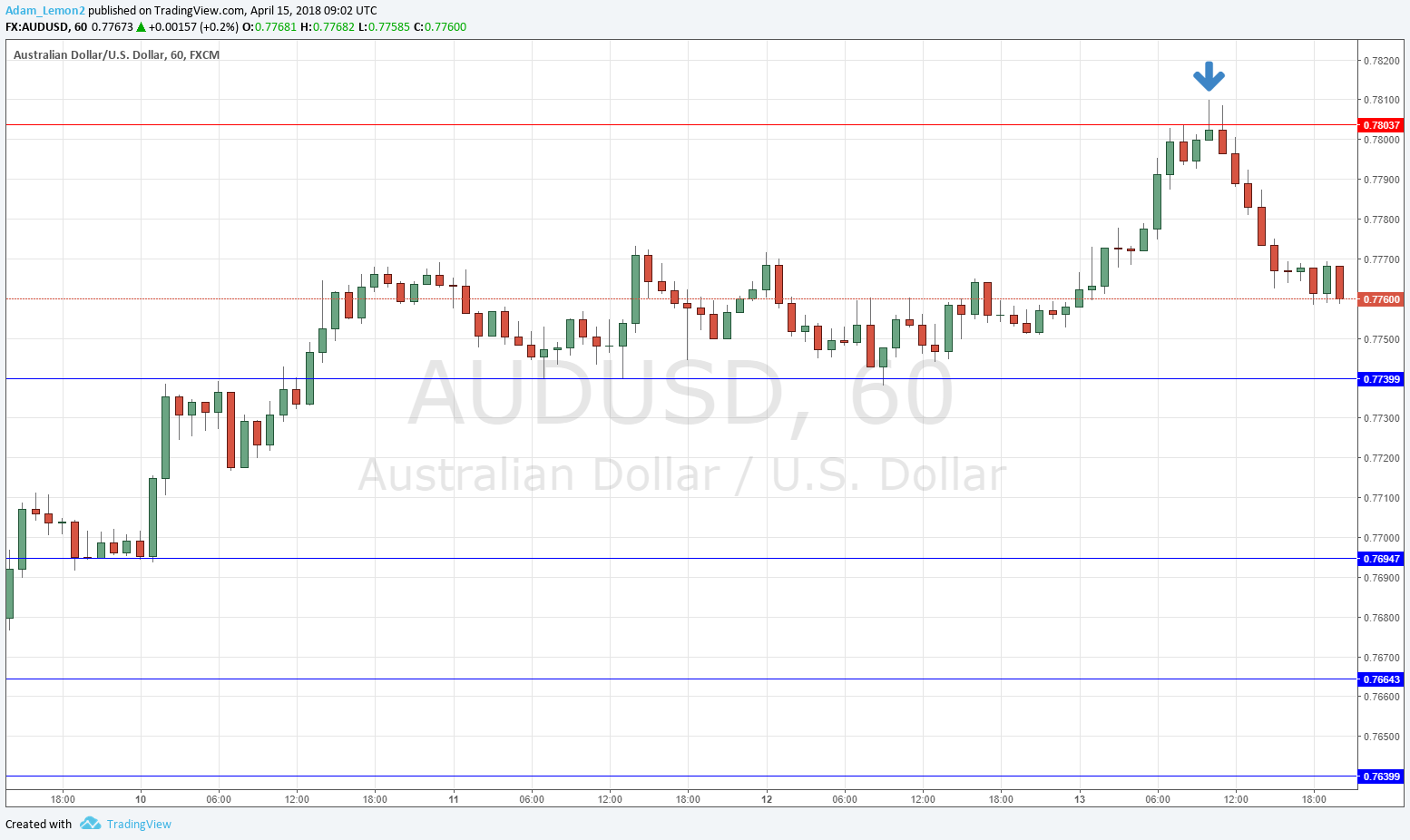This week we’ll begin with our monthly and weekly forecasts of the currency pairs worth watching. The first part of our forecast is based upon our research of the past 16 years of Forex prices, which show that the following methodologies have all produced profitable results:
* Trading the two currencies that are trending the most strongly over the past 3 months.
* Assuming that trends are usually ready to reverse after 12 months.
* Trading against very strong counter-trend movements by currency pairs made during the previous week.
* Buying currencies with high interest rates and selling currencies with low interest rates.
Let’s take a look at the relevant data of currency price changes and interest rates to date, which we compiled using a trade-weighted index of the major global currencies:
Monthly Forecast April 2018
This month, we forecasted that the best trades would be long EUR/USD and long GBP/USD. The performance so far is as follows:
Weekly Forecast 15th April 2018
Last week, we made no weekly forecast, as there were no strong counter-trend movements that week.
This week, we make no weekly forecast, as there were again no strong counter-trend movements.
This week has been dominated by relative strength in the Canadian Dollar, and relative weakness in the Swiss Franc.
Volatility was higher than it was last week, with approximately 44% of the major or minor currency pairs changing in value by more than 1%. Volatility is likely to be similar next week.
You can trade our forecasts in a real or demo Forex brokerage account.
Previous Monthly Forecasts
You can view the results of our previous monthly forecasts here.
Key Support/Resistance Levels for Popular Pairs
We teach that trades should be entered and exited at or very close to key support and resistance levels. There are certain key support and resistance levels that should be watched on the more popular currency pairs this week, which might result in either reversals or breakouts:
Let’s see how trading one of these key pairs last week off key support and resistance levels could have worked out:
AUD/USD
We had expected the level at 0.7804 might act as resistance, as it has acted previously as both support and resistance. Note how these “flipping” levels can work well. The H1 chart below shows the how the price hit the resistance level at 0.7804 during Friday’s London session. It made a sharp bearish V-shaped turn, printing a bearish pin candlestick followed by a bearish engulfing candlestick which signaled a short trade entry. This trade has been successful, achieving a maximum positive reward to risk ratio so far of more than 3 to 1.
You can trade our forecasts in a real or demo Forex brokerage account to test the strategies and strengthen your self-confidence before investing real funds.


